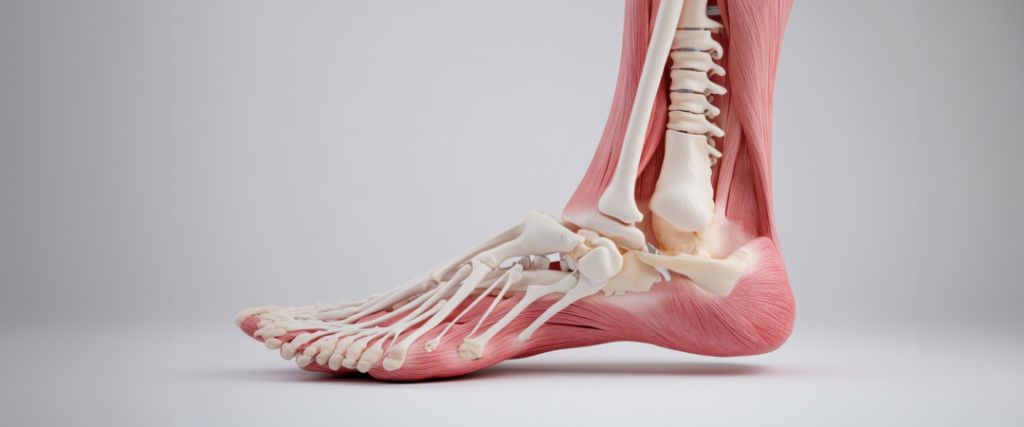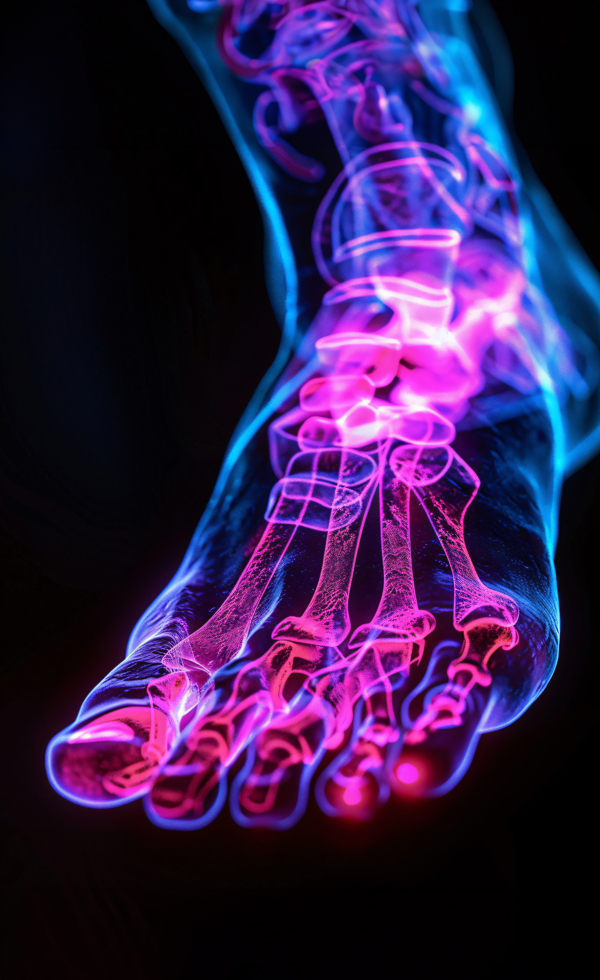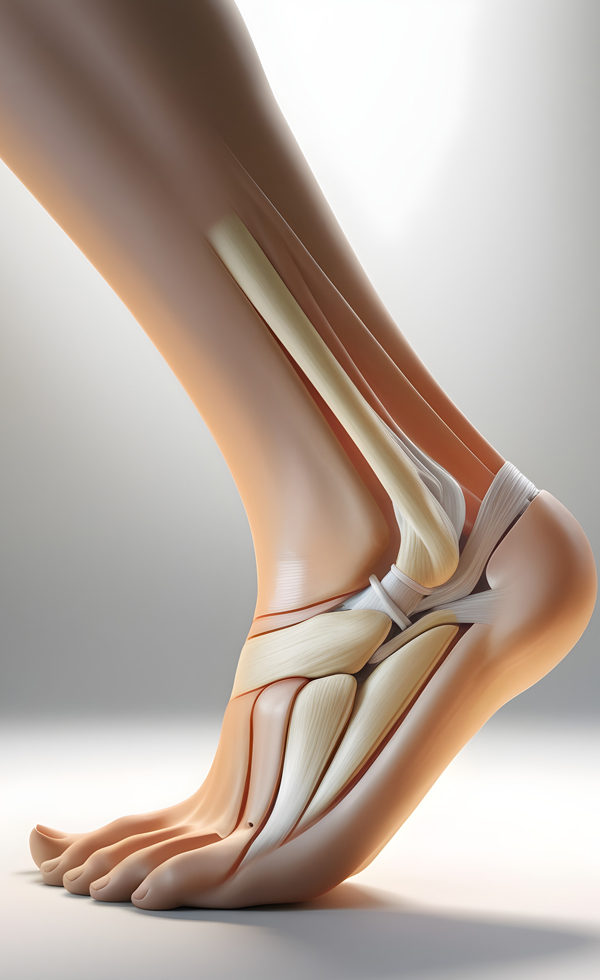
Ankle ligament surgery, or ligamentoplasty, is a surgical procedure that is garnering increasing interest from both athletes and active individuals looking to resume their activities pain-free. If you’ve ever wondered how this procedure works, what techniques are used, or how long recovery takes, you’re in the right place. In this article, we will explore everything you need to know about ankle ligamentoplasty in depth. From innovative surgical methods to key rehabilitation steps and expected outcomes, we will provide a comprehensive guide to help you better understand this operation. Whether you’re considering the procedure or simply want to learn more, we’re here to light your path toward a healthier ankle. Get ready to discover the challenges and benefits of a well-performed ligamentoplasty!
What is ankle ligamentoplasty?
Ankle ligamentoplasty is a surgical procedure aimed at repairing or reconstructing damaged ligaments in the ankle. Ligaments are bands of fibrous tissue that connect bones to each other and stabilize joints. When these ligaments are torn or severely damaged, the ankle’s stability is compromised, which can lead to chronic pain, swelling, and a loss of function. Ligamentoplasty is performed to restore this stability and allow patients to return to an active, pain-free life.
This surgical procedure is often recommended after acute injuries or repeated ankle sprains that have not healed well despite conservative treatments like physical therapy or immobilization. The procedure may also be suggested for athletes whose performance is affected by an unstable ankle, or for individuals with demanding daily activities that require a fully functional ankle.
There are several ligamentoplasty techniques, each tailored to the specific needs of the patient and the nature of the injury. The most common methods include using tissue grafts, either taken from the patient themselves (autograft) or from donors (allograft), to replace the damaged ligaments. These techniques allow for a strong and durable repair, promoting optimal recovery and reducing the risk of new injuries.
Indications for Ankle Ligamentoplasty
Ankle ligamentoplasty is primarily indicated for patients suffering from chronic ankle instability. This instability can be due to repeated sprains that have weakened the ligaments. When the ankle becomes unstable, it is more likely to twist or get injured, which can severely limit physical activity and affect quality of life.
Athletes, particularly those in sports requiring rapid changes in direction, jumping, or intense running, are often candidates for this surgery. An unstable ankle can not only diminish their performance but also increase the risk of more serious injuries. Sometimes, even after intensive rehabilitation, instability persists, making ligamentoplasty a necessary option to regain full functionality.
Beyond athletes, people with physically demanding jobs or active lifestyles may also need this procedure. An unstable ankle can make daily activities like walking, climbing stairs, or standing for long periods difficult or painful. Ligamentoplasty can thus significantly improve quality of life by restoring stability and allowing a return to activities without pain.
Surgical Techniques for Ligamentoplasty
Ankle ligamentoplasty can be performed using various techniques, each with its specific advantages depending on the patient’s needs and the nature of the injury. One of the most common methods is direct repair, where the damaged ligaments are sutured to restore their integrity. However, this technique is often reserved for cases where the ligaments are not too severely damaged.
Another frequently used technique is ligament reconstruction with a graft. This method involves using tissue taken from the patient (autograft) or a donor (allograft) to replace the torn ligaments. The autograft is often taken from the patellar tendon, hamstring tendon, or gracilis tendon. The allograft, on the other hand, usually comes from a tissue bank. This technique is particularly useful for patients with severely damaged ligaments or for those whose direct repairs have failed.
Finally, arthroscopic ligamentoplasty is a minimally invasive technique that uses a small camera and specialized instruments to repair or reconstruct ligaments through small incisions. This method reduces post-operative pain, scarring, and recovery time compared to traditional open techniques. It is often preferred for active patients who want to return to their activities quickly.

Preparing for Surgery
Preparation for ankle ligament reconstruction begins well before the operation date. A thorough evaluation by an orthopedic surgeon is essential to determine the best surgical technique and to ensure the patient is in good health for the procedure. This evaluation typically includes a physical examination, X-rays, an MRI, and sometimes laboratory tests to assess the patient’s general condition.
The patient must also prepare mentally and physically for surgery. This may include pre-operative physical therapy sessions to strengthen the muscles around the ankle and improve mobility. These sessions help prepare the ankle for better post-operative recovery. Additionally, it is often advisable to stop smoking and reduce alcohol consumption, as these factors can affect healing.
It is also important to plan for the post-operative period. This includes arranging transportation home after surgery, preparing the home environment to facilitate mobility (such as moving objects off the floor or installing grab bars), and ensuring support is available for the first few weeks after the operation. Good preparation can greatly improve the surgical experience and recovery.
The Ligament Reconstruction Procedure
On the day of surgery, the patient is typically admitted to the hospital or clinic a few hours before the procedure. After administrative formalities, they are taken to a preparation room where a medical team performs the final pre-operative checks. Anesthesia is then administered, which can be general or regional, depending on the surgeon’s and patient’s preference.
The ligament reconstruction operation begins with an incision made around the ankle to access the damaged ligaments. In the case of arthroscopic ligament reconstruction, small incisions are made to insert the camera and instruments. The surgeon then proceeds to repair or reconstruct the ligaments using the appropriate techniques discussed previously. If a graft is necessary, it is carefully secured to ensure optimal stability.
Once the repair is complete, the surgeon checks the ankle’s stability and ensures everything is properly in place. The incisions are then closed with sutures or staples, and the ankle is immobilized with a splint or cast. The patient is then taken to the recovery room where they are monitored until the effects of anesthesia wear off. The total duration of the operation generally varies between one and two hours, depending on the complexity of the procedure.
Post-operative Recovery: Steps and Tips
Recovery after ankle ligament reconstruction is a crucial step for the success of the operation. Immediately after surgery, the patient must remain in the hospital or clinic under medical supervision to ensure there are no immediate complications. Once stable, the patient can go home with detailed instructions for post-operative care.
The first few post-operative weeks often require complete immobilization of the ankle with a splint or cast. During this period, it is essential to keep the ankle elevated as much as possible to reduce swelling and apply cold compresses to minimize pain and inflammation. The patient may also receive pain medication to manage discomfort.
It is crucial to carefully follow the surgeon’s instructions regarding weight-bearing on the operated ankle. In most cases, crutches are necessary to avoid putting weight on the ankle for the first few weeks. Follow-up appointments with the surgeon are essential to monitor healing and remove sutures or staples. Proper management of this initial period is key to a successful recovery.
Rehabilitation and Physical Therapy After Ligamentoplasty
Rehabilitation and physical therapy play a crucial role in the recovery process following ankle ligamentoplasty. Once the surgeon gives the green light, the patient begins a physical therapy program designed to restore strength, flexibility, and ankle function. This program is typically customized to the patient’s specific needs and the nature of the injury.
The initial stages of rehabilitation focus on reducing pain and swelling, as well as restoring basic mobility. Gentle range-of-motion exercises are introduced to prevent joint stiffness and improve mobility. Physical therapy sessions may also include massage techniques, ultrasound therapy, and heat or ice therapies to support the healing process.
As the ankle heals, the rehabilitation program progresses to include strengthening and proprioception exercises. These exercises are essential for strengthening the muscles around the ankle and improving balance and coordination, which helps prevent future injuries. Progression is gradual and closely monitored by the physical therapist to ensure the patient recovers safely and effectively. Properly conducted rehabilitation is key to regaining optimal ankle function.


Potential Complications and Associated Risks
Like any surgical procedure, ankle ligament reconstruction carries certain risks and potential complications. It is essential for patients to be aware of these risks before deciding to undergo the operation. The most common complications include infection, bleeding, and reactions to anesthesia. Although rare, these complications can occur and require immediate medical attention.
Another possible complication is the formation of blood clots, also known as deep vein thrombosis (DVT). This condition can be serious if a clot travels to the lungs, causing a pulmonary embolism. Doctors take precautions to minimize this risk, such as prescribing anticoagulants and encouraging early mobilization after surgery.
Complications specific to ligament reconstruction can also include poor graft healing, loss of joint mobility, or residual ankle instability. It is crucial to carefully follow post-operative instructions and actively participate in rehabilitation to reduce these risks. Open communication with the surgeon and physical therapist is essential for managing and preventing these complications.
Expected Outcomes and Long-Term Follow-Up
The results of ankle ligament reconstruction are generally positive, with many patients regaining near-normal function of their ankle. Most patients report a significant reduction in pain, improved stability, and an increased ability to participate in physical activities without limitations. However, outcomes can vary depending on the severity of the initial injury, the surgical technique used, and the patient’s commitment to following the rehabilitation program.
Long-term follow-up is crucial to ensure the success of the surgery. Regular check-ups with the surgeon help monitor healing and quickly address any complications. Patients are also encouraged to continue strengthening and proprioception exercises at home to maintain stability and prevent future injuries. Gradual resumption of sports and physically demanding activities is essential to avoid recurrence.
Some patients may still experience mild stiffness or slight discomfort, particularly during changes in weather or after intense activities. However, these symptoms are usually manageable and tend to diminish over time with ongoing rehabilitation. By closely following medical advice and staying committed to the recovery process, patients can look forward to resuming an active and pain-free life.

